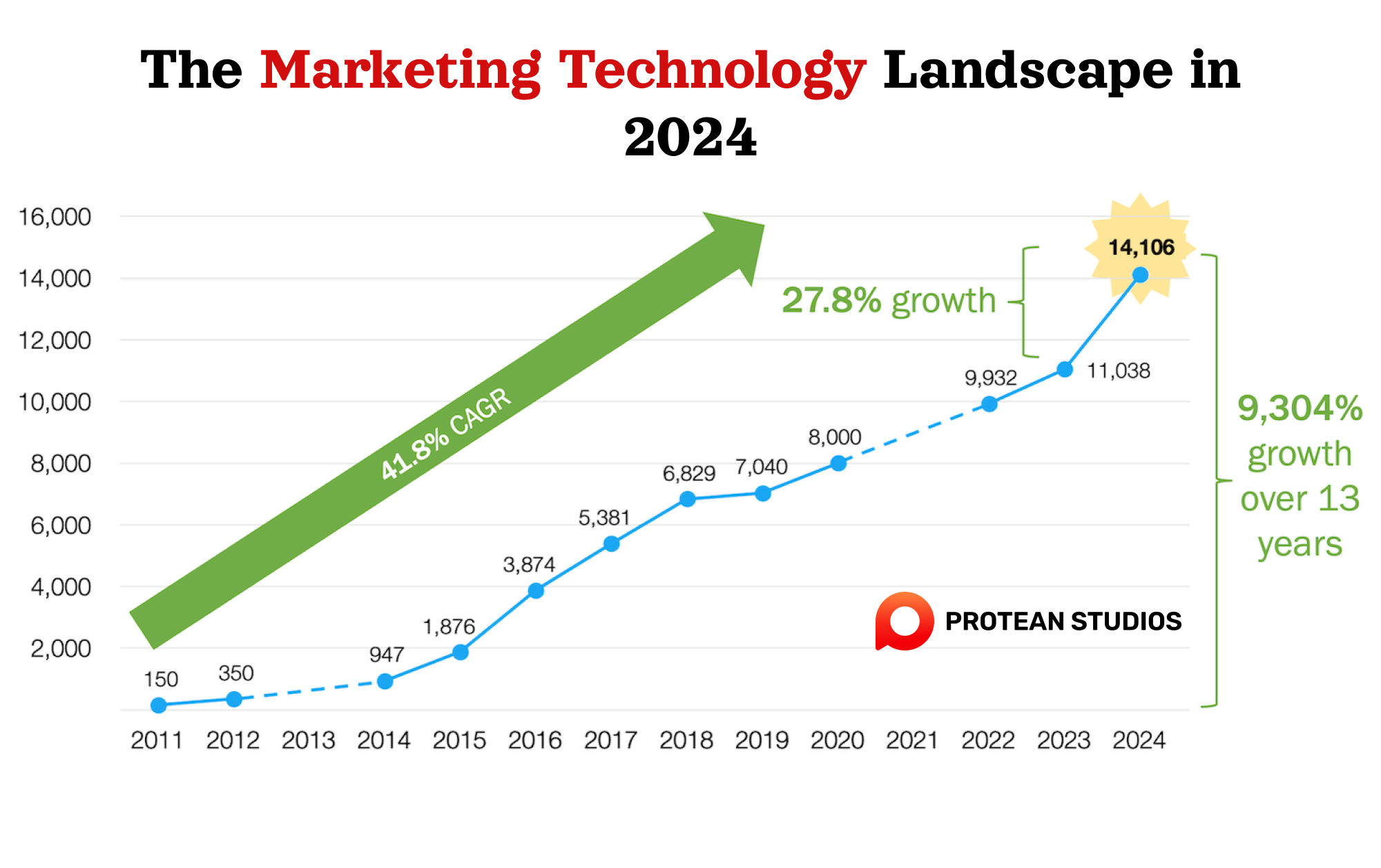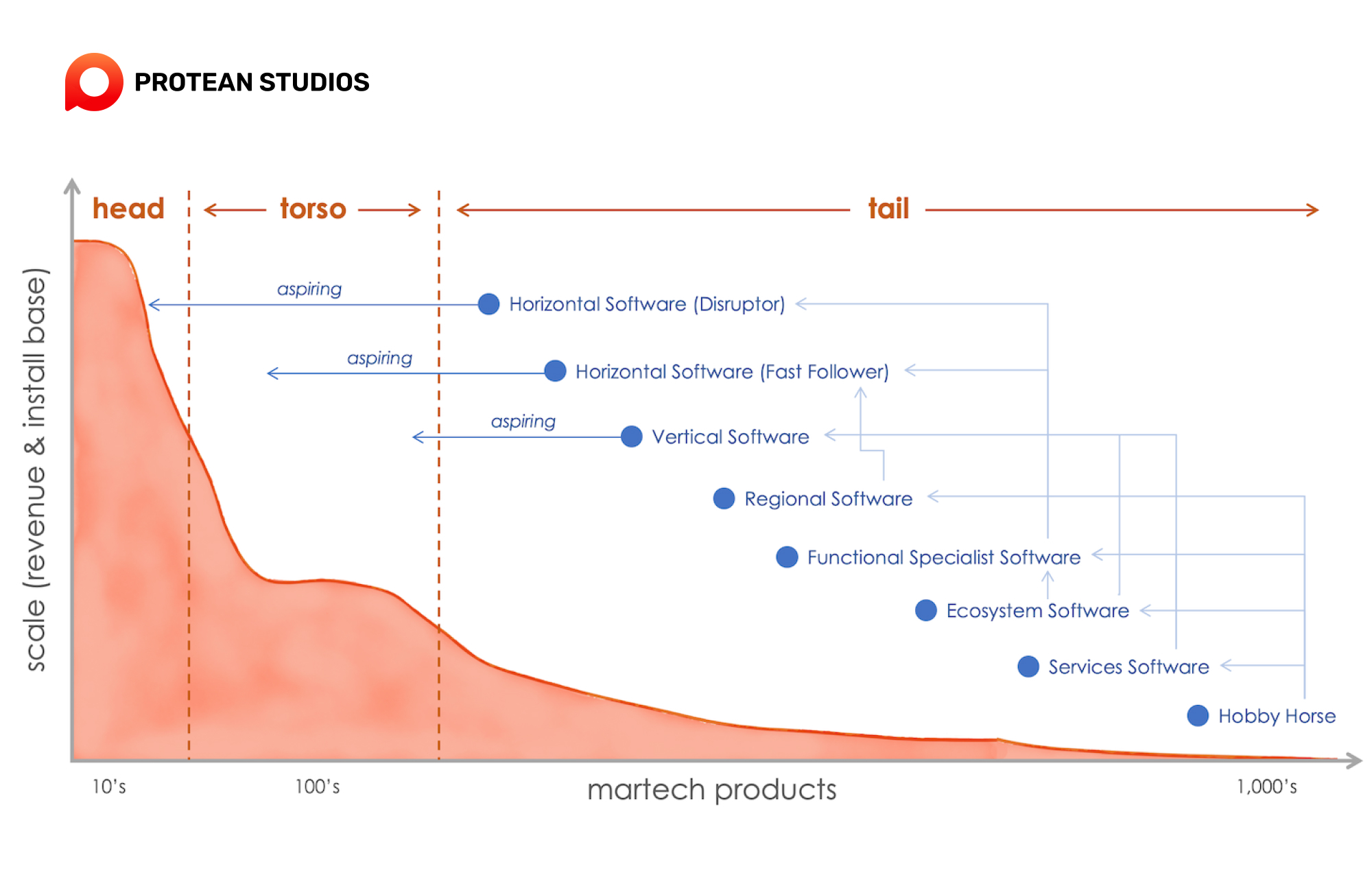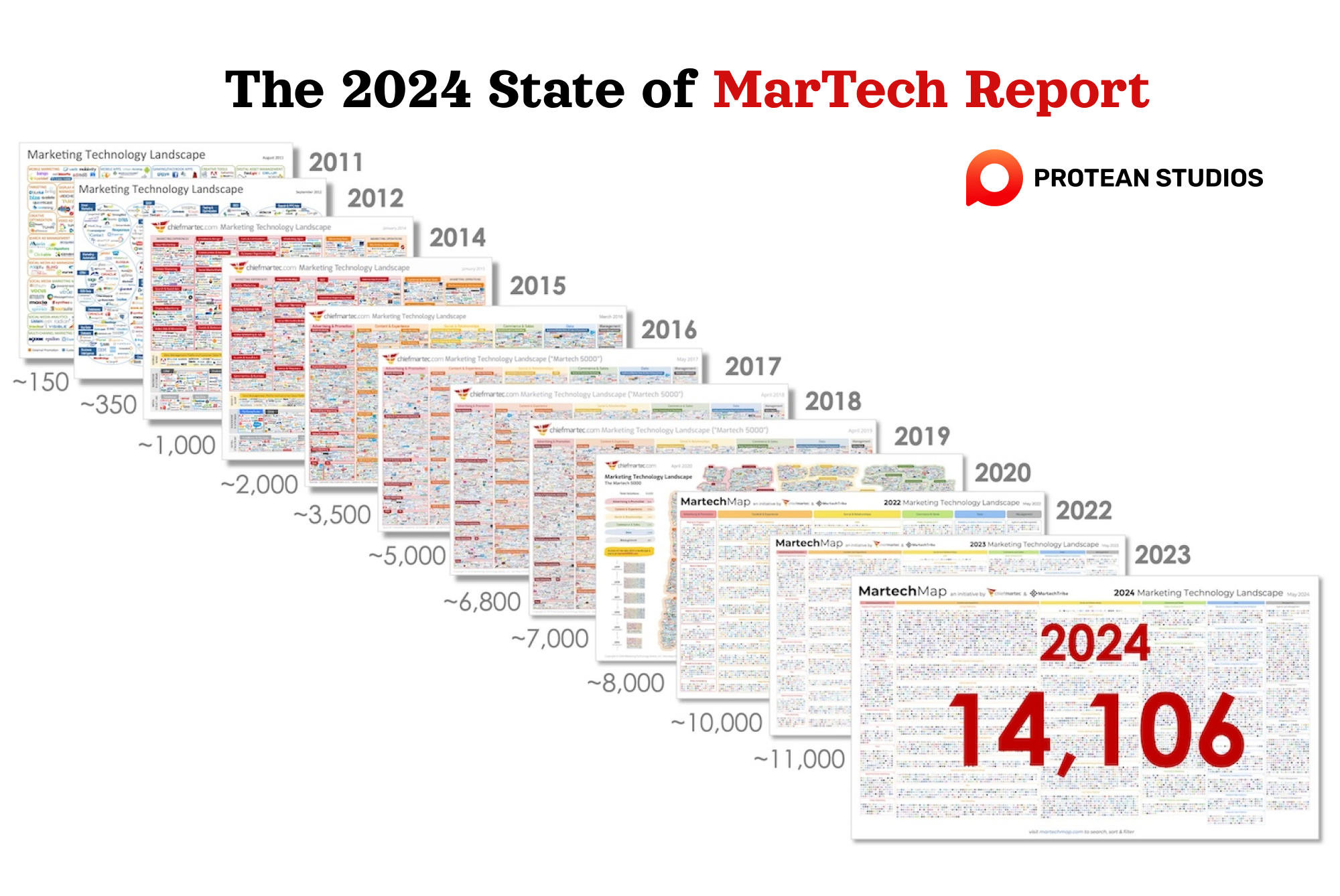The marketing technology landscape continues its explosive growth, and the 2024 Supergraphic is here to chart the ever-expanding territory. This year's edition boasts a staggering 14,106 solutions, reflecting a near 28% increase from 2023.
If you're feeling overwhelmed by the sheer number of options, fear not. This introduction will guide you through the Supergraphic, highlighting key trends and helping you navigate the vast martech universe.
The overview of the marketing technology landscape in 2024
To know the landscape of MarTech in 2024, you need to know some features, as follows:
1. The Martech Landscape
The martech landscape has grown for the 13th consecutive year, now featuring 14,106 marketing technology products—a net increase of 3,068 from last year’s 11,038, marking a 27.8% year-over-year growth. Surprisingly, there was a 2.1% churn from 2023 to 2024, with just 263 products disappearing. Some may have been acquired but still operate under their original brand, while others linger despite recent market turmoil.

SaaS companies often persist with low operating costs and a steady customer base, which can sustain them for years. Notably, from the first landscape in 2011 to today, the number of martech products has surged by 9,304%, achieving a remarkable 41.8% compound annual growth rate (CAGR) over 13 years.
Read more: Did MarTech Disrupt B2B Marketing?
I know some of you might be thinking, "Please, make that confusing image go away." Others might be wondering how this growth is even possible.
The reality is that the landscape of software development has shifted. With the rise of cloud computing, anyone can create software with relative ease. Generative AI has intensified this trend even more. Tools like OpenAI, Gemini, Llama, and Anthropic have inspired tens of thousands of developers to create new software. These AI models not only inspire new projects but also assist in the development process through AI-powered "co-pilots."
To give you an idea of the scale, there are now 1.8 million AI projects on GitHub (source: 2024 AI Index Report). This vast number of projects makes the expansive martech landscape seem quite small in comparison.
2. Growth Statistics
Not all the 14,106 Martech products are large-scale software businesses. Most are part of the “long tail” of small businesses, startups, and side projects that focus on specific functions, industries, regions, or platforms. Many are apps from service firms that have turned their unique processes into products. While not all these small ventures will succeed, this is true for any industry—52% of the Fortune 500 companies from 2003 no longer exist today.
Yet, because these ventures are small doesn't mean they can't be successful. There are over 400,000 marketing agencies worldwide, a number that has grown each year, though at a modest 2.6% growth rate. Like martech products, not all agencies will succeed, but new ones will continue to emerge, keeping the industry dynamic.

In our analysis of over 1,000 martech stacks from various companies over the past 7 years, we’ve found that the distribution of products remains consistent. The industry features a mix of leading products, mid-sized solutions, and many smaller, niche offerings, demonstrating a persistent balance across the market.
Other Article: The Turning Point: Martech Systems Vs. Martech UX Complexity
The 2024 State of Martech Report
There's much more to delve into how the dynamics of marketing and martech are influenced by the evolving software landscape. Besides, we're examining how this landscape affects composability with martech applications and experiences, and vice versa.
Our recent comprehensive examination of composability in martech yielded some unexpected results. Contrary to conventional wisdom, certain aspects of Martech stack management appear to be misconceived. A few of our findings may be surprising to CFOs and CIOs.
Besides, to keep pace with these changes, the 2024 State of Martech Report delves deep into current trends and challenges faced by marketers.

This year's report promises to be a valuable resource, offering insights into:
The ever-growing martech stack: Brace yourself! The report investigates the explosion of marketing technology solutions, with a staggering number exceeding 14,000!
AI's rising influence: The report explores how artificial intelligence is transforming marketing, from personalization to campaign optimization.
The quest for composability: simplifying complex tech stacks is a major focus. The report analyzes how marketers are striving for composable solutions that integrate seamlessly.
Budgetary battles: Balancing innovation with cost-effectiveness is an ongoing struggle. The report explores how marketing leaders are navigating budget constraints in the martech landscape.
Learn more: Marketing Software: Examining Features, Advantages, And Pricing In 2024
The trends of MarTech in the future
The world of marketing technology is in constant evolution, with new tools and strategies emerging all the time. As we look towards the future, here are some key trends that are poised to shape the MarTech landscape:
AI and machine learning Take Center Stage: Expect even deeper integration of AI and machine learning (ML) across MarTech solutions. This will lead to smarter automation, hyper-personalized experiences, and real-time campaign optimization.
Customer Data Platform (CDP): Managing and unifying customer data will be crucial. CDPs will become central hubs, allowing marketers to create a holistic view of each customer and deliver targeted experiences.
The Cookieless Future is Here: With the decline of third-party cookies, marketers will need to find new ways to track and target customers. This will lead to a rise in first-party data collection and contextual targeting strategies.
The MarTech Stack Gets Streamlined: Complexity can be paralyzing. Look for a trend towards composable MarTech stacks, where best-of-breed solutions integrate to create a more efficient experience.
Conversational Marketing: Chatbots, virtual assistants, and interactive experiences will become commonplace. Marketers will leverage these tools to create personalized conversations and provide real-time customer support.
These are just a few of the exciting trends that are shaping the future of MarTech. By staying informed and embracing these advancements, marketers can ensure they are well-equipped to navigate the ever-changing customer landscape.




